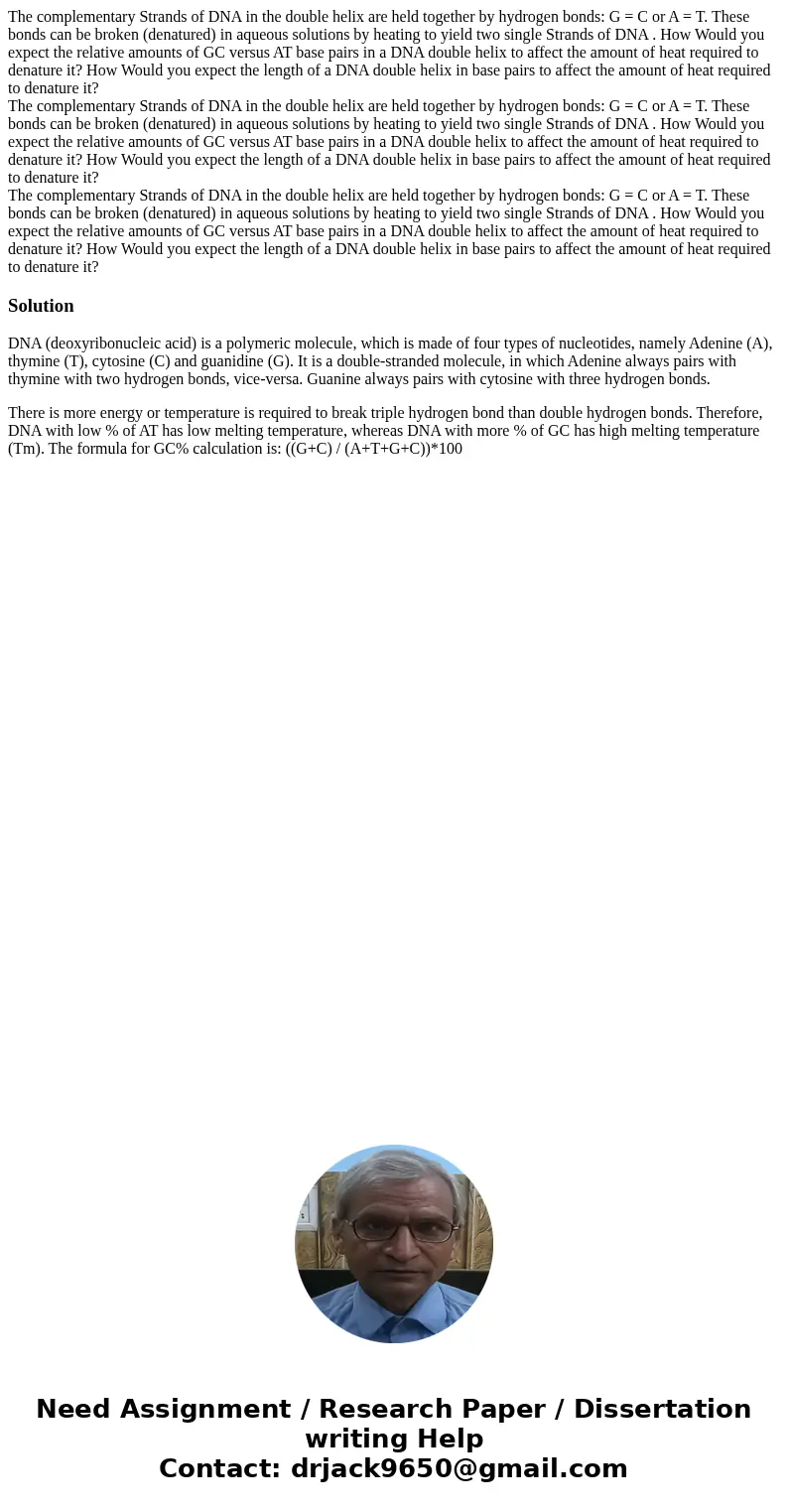The complementary Strands of DNA in the double helix are hel
The complementary Strands of DNA in the double helix are held together by hydrogen bonds: G = C or A = T. These bonds can be broken (denatured) in aqueous solutions by heating to yield two single Strands of DNA . How Would you expect the relative amounts of GC versus AT base pairs in a DNA double helix to affect the amount of heat required to denature it? How Would you expect the length of a DNA double helix in base pairs to affect the amount of heat required to denature it?
The complementary Strands of DNA in the double helix are held together by hydrogen bonds: G = C or A = T. These bonds can be broken (denatured) in aqueous solutions by heating to yield two single Strands of DNA . How Would you expect the relative amounts of GC versus AT base pairs in a DNA double helix to affect the amount of heat required to denature it? How Would you expect the length of a DNA double helix in base pairs to affect the amount of heat required to denature it?
The complementary Strands of DNA in the double helix are held together by hydrogen bonds: G = C or A = T. These bonds can be broken (denatured) in aqueous solutions by heating to yield two single Strands of DNA . How Would you expect the relative amounts of GC versus AT base pairs in a DNA double helix to affect the amount of heat required to denature it? How Would you expect the length of a DNA double helix in base pairs to affect the amount of heat required to denature it?
Solution
DNA (deoxyribonucleic acid) is a polymeric molecule, which is made of four types of nucleotides, namely Adenine (A), thymine (T), cytosine (C) and guanidine (G). It is a double-stranded molecule, in which Adenine always pairs with thymine with two hydrogen bonds, vice-versa. Guanine always pairs with cytosine with three hydrogen bonds.
There is more energy or temperature is required to break triple hydrogen bond than double hydrogen bonds. Therefore, DNA with low % of AT has low melting temperature, whereas DNA with more % of GC has high melting temperature (Tm). The formula for GC% calculation is: ((G+C) / (A+T+G+C))*100

 Homework Sourse
Homework Sourse